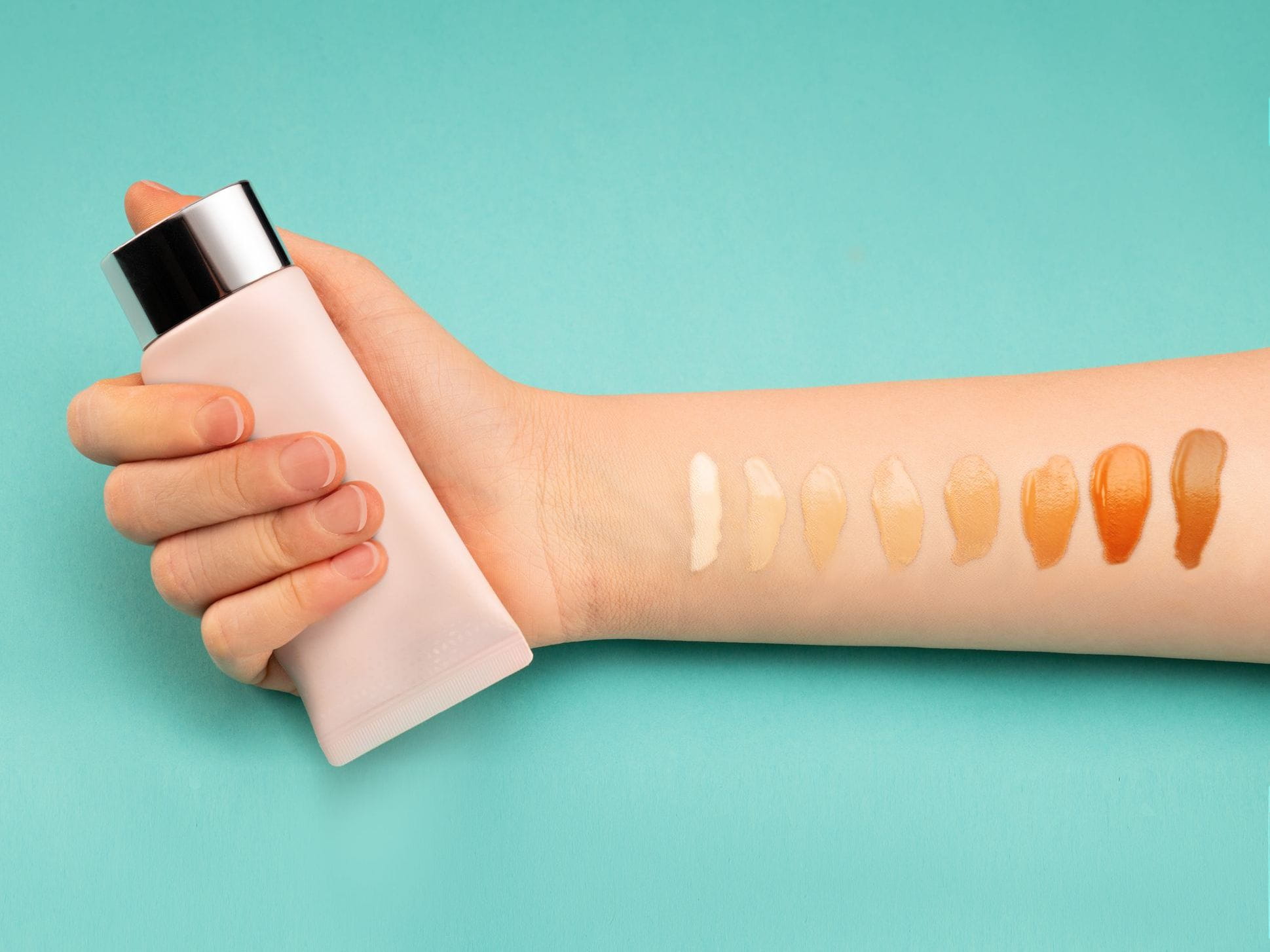A Primer on Primers, Foundations, and Cream-Based Makeup

The Bottom Line
Primers, foundations, and cream-based makeups are applied first to give the face a smooth appearance. These products are usually not toxic to the skin unless contaminated with bacteria or other chemicals. Ingestion of a large quantity of cream-based makeup can cause diarrhea. If you are allergic, redness, itching, swelling, and rash may occur.

Primers, foundations, and cream-based makeups: what are they made of?
Primers fill in pores, lines, wrinkles, and scarring on the face. They act as a barrier between skin and make-up. Primers are made of silicone-based polymers such as cyclomethicone and dimethicone and may or may not contain sunscreen, fragrance, oil, and preservatives.
Foundation is applied to the face and neck and can be liquid, cream, or powder. It gives the face a uniform color and can change the skin tone. Common ingredients are titanium dioxide, zinc oxide, and kaolin plus talc, mica, or clay. The formulation varies depending on whether the base is an oil, alcohol, powder, mineral, or water.
Creams are an emulsion, which is a mixture of oil and water with a dispersing agent. Creams are more nourishing than powder and blend in more easily, so they are especially good for dry skin or mature skin.
Are primers, foundations and cream-based makeups toxic to the skin?
Primers and foundations are not toxic to the skin, unless they clog your pores which can lead to pimples, blackheads, and acne. Use primer sparingly; a pea sized amount is adequate. Choose a foundation that is not heavy or oily to minimize risk of acne. If you have sensitive skin that is prone to acne, use a non-comedogenic primer and foundation that does not block pores.
Cream-based makeups are usually not toxic to the skin. If the cream emulsion (oil and water mixture) is separated, it is not advised that you use it. Cosmetics, includingcream-based makeups, can sometimes be contaminated with bacteria or heavy metals, phthalates, and formaldehyde. After the container is opened or if you are continually putting your fingers in the makeup, bacterial or fungal contamination is possible. Preservative-free products have a higher risk of bacterial contamination. Another concern is polyfluoroalkyl substances (PFAS), which have been found in some foundation products and can be absorbed through the skin or when ingested.
Are primers, foundations, and cream-based makeups toxic if ingested?
Primers, foundations and cream-based makeups are usually not toxic. If a large amount of a cream-based makeup is ingested, diarrhea is possible. A large amount of kaolin containing foundations may cause constipation. Makeup brush cleaners can contain alcohols, hydrocarbons, and surfactants which are toxic if ingested.
Am I allergic to my make-up? How do I know?
If you are allergic to your make-up, you may experience allergic contact dermatitis. Symptoms include redness, itching, swelling, and hives on the area of your face where you use the make-up.
I am having a negative reaction to my primer, foundation or cream-based makeup. What should I do?
Stop using the cosmetic product(s). Wash your face with soap and water. Apply cold compresses and then moisturizers to help your face feel better. Avoid using similar products. If you are experiencing an allergic reaction, a steroid cream such as non-prescription hydrocortisone or an oral antihistamine such as diphenhydramine (Benadryl) or cetirizine (Zyrtec) may be indicated.
If someone is having a reaction to primer, foundation or cream-based makeup, gets and of these in the eyes, or swallows them, help from experts is available through the webPOISONCONTROL online tool and by phone at 1-800-222-1222. Poison Control’s expert guidance is always free, confidential, and available 24 hours a day.
Wendy Klein-Schwartz, Pharm.D., MPH
Clinical Toxicologist
Poison Control Media Information
Did you find this page helpful? If so, we need your support. Poison Control is in constant competition with misinformation online. Links to www.poison.org or our webPOISONCONTROL triage tool from other websites and blogs help internet searchers quickly find accurate information and Poison Control’s contact information in an emergency. If you use the content from this page, please provide attribution via a link back to this page, www.poison.org, or https://triage.webpoisoncontrol.org/#!/exclusions. By doing so, you could save a life. Thank you!
Poisoned?
Call 1-800-222-1222 or
Prevention Tips
- Store primers, foundations, and cream-based makeup up, away, and out of sight of children.
- Clean your face and hands before applying makeup.
- Clean brushes regularly.
- If possible, avoid using applicator repeatedly by applying makeup to your finger or palm and then using a clean brush to put it on your face.
- Apply moisturizer to keep your skin from getting dry.
- Store makeup in a cool dry place, preferably not in the bathroom where it is exposed to moisture.
- Keep containers clean and covered.
- Don’t share makeup.
- Don’t use makeup if the emulsion is separated or there is a change in color or texture or if the product smells different.
- Don’t add anything to makeup.
- Check the expiration date and throw it out if it’s expired.
- When opening a new product, write the date on it with a marker or masking tape. Throw away in 6 months to a year.
This Really Happened
A 2-year-old child swallowed the contents of a brand-new unused cream-based makeup. The mother called Poison Control. The specialist asked for the size of the container and checked that he was not coughing or in any respiratory distress. The mother said the ingestion occurred 5 minutes ago and her son appeared fine. The container was 1 ounce and was now completely empty. The specialist told the mother that it was unlikely her son would experience toxicity. Although diarrhea is possible with cream-based makeups, the quantity was probably small enough that diarrhea was unlikely to develop. The mother was told that if diarrhea occurred, she should provide fluids to keep her son hydrated and call back with any concerns.For More Information
Cosmetics. FDA.References
Poisoned?
Call 1-800-222-1222 or
Prevention Tips
- Store primers, foundations, and cream-based makeup up, away, and out of sight of children.
- Clean your face and hands before applying makeup.
- Clean brushes regularly.
- If possible, avoid using applicator repeatedly by applying makeup to your finger or palm and then using a clean brush to put it on your face.
- Apply moisturizer to keep your skin from getting dry.
- Store makeup in a cool dry place, preferably not in the bathroom where it is exposed to moisture.
- Keep containers clean and covered.
- Don’t share makeup.
- Don’t use makeup if the emulsion is separated or there is a change in color or texture or if the product smells different.
- Don’t add anything to makeup.
- Check the expiration date and throw it out if it’s expired.
- When opening a new product, write the date on it with a marker or masking tape. Throw away in 6 months to a year.
